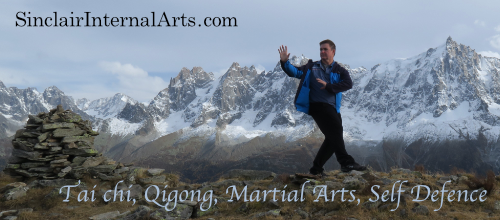Migrate this
Internal Power is used by “internal martial arts” like tai chi. But it is also used by the so-called “external martial arts.” The combination of both internal and external power is essential to successful tactics and strategy. A large part of the problem with teaching internal martial arts is that the terminology is confusing.
Internal power is a combination of mechanical efficiencies that integrate mind and body to create a more powerful machine. But that machine is constructed from class-three levers and other inefficient elements.
There is also the fact that inefficient tools are sometimes exactly what we need.
If you think that practising an internal martial art makes us superior to other schools, you are mistaken. Sometimes there will be students from other schools who are better at doing what we teach. Tai chi does not have a monopoly on internal power, and every person is different.
The term, “Internal martial art” can have a couple of different meanings. One refers to one that focuses on cultivating subtle principles that are only understood by “indoor students” or those who have passed a particular threshold of understanding and skill. In that respect, one might say that it actually refers to a level of achievement, not a style or a school. The problem with internal martial arts these days is that they sometimes try to focus only on the subtle and advanced skills, and neglect the essential mundane.
The term “internal power” refers to that set of mechanical efficiencies achieved by elite masters. But internal skills do not exclude “external power.” In fact, the internal power is a subtle coordination of all the external ones.
An example I use is the fact that the entire body is made up of class three levers. But we combine them, with the subtle manipulation of fascia, to create class one and class two levers. The centripetal tensile geodesics that form “Peng jing” are maintained by subtle external power, not by the elimination of it.
It is like balancing a pole, on end, on your head. If the pole moves too much, you need to make big changes and use a lot more effort with individual muscle groups. But the better the balancing, the less effort is required. But if the pole is well balance, you require less effort and more awareness. There will be more frequent, subtle, and gentle changes.
Internal power is the subtle use of lots of different applications of external power, as opposed to the heavy use of a few applications of external power.

Comments are closed.